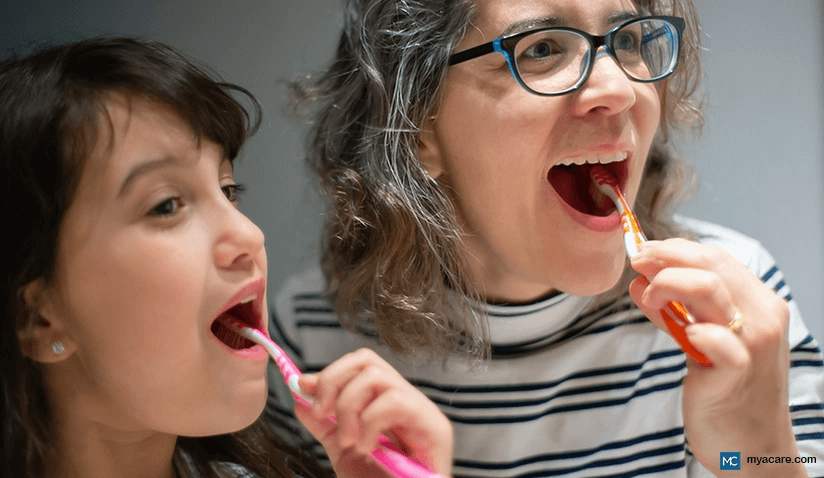How Safe Is the Sodium Lauryl Sulfate in Toothpaste?

Article Updated 25 July 2023
This article is continuously updated.
Brushing is the most common and efficient way to maintain oral hygiene. A regular toothpaste contains abrasives (e.g., calcium carbonate, dehydrated silica, and aluminum oxides), detergent or surfactant (e.g., sodium lauryl sulfate), antibacterial agents (e.g., triclosan), humectants (e.g., sorbitol, glycerin), flavoring agents (e.g., saccharin, peppermint, spearmint), fluoride, and preservatives (e.g., sodium benzoate, methylparaben).
The purpose of using a toothpaste is to reduce the oral bacteria and distribute fluoride to protect teeth from decay and periodontal diseases. However, there is a growing concern regarding the adverse effects of ingredients such as sodium lauryl sulfate present in the toothpaste. This article discusses the role of sodium lauryl sulfate in toothpastes and highlights its adverse effects.
Role of sodium lauryl sulfate in toothpaste
Sodium lauryl sulfate (SLS) is a synthetic product extracted from coconut and palm oils. It serves as a surfactant or foaming agent. It is commonly used in several cleaning products such as soaps, shampoos, shower gels, bath foams, and toothpaste. Toothpastes contain ~0.5%-2.5% of SLS by weight. SLS has anti-microbial properties and is responsible for the foaming action that gives a perception of cleaning. SLS helps in the distribution of toothpaste in the oral cavity. It also reduces bacterial plaque (film of bacteria) in the oral cavity as it binds with bacterial protein and disrupts the bond between bacteria and the tooth surface. These properties are liked by consumers and increase their likelihood to continue using the toothpaste.
Side effects of sodium lauryl sulfate in toothpastes
The presence of SLS in higher concentrations in cleaning products irritates the skin. Repetitive application may result in inflammation of the skin (contact dermatitis). When used in toothpaste, SLS can cause the following side effects.
- Recurrent aphthous stomatitis: It is a painful recurring condition associated with the presence of single or multiple ulcers in the mouth with defined margins and redness. The use of a toothpaste with a high concentration of SLS may result in recurrence of the ulcers. This is due to irritation of soft tissue resulting in shedding of the mucosa (lining or inner skin of the oral cavity). Exposure to SLS in toothpaste removes the protective mucin layer present in the soft tissues of the oral cavity. This compromises the integrity of the oral mucosa, resulting in ulceration of soft tissues (e.g., gums, inner lining of cheeks, lips, and tongue). Ulcers take about 5-8 days to heal completely.
- Altered taste perception: Some individuals have reported a reduced or altered perception of taste which lasts up to 4 hours. SLS interferes with the working of taste cells, altering the taste perception. This unpleasant taste sensation is evident when citrus fruit juice is immediately consumed after brushing with a SLS-rich toothpaste.
- Burning sensation in the mouth: Some individuals complain of burning sensation in the inner surface of lips, tongue, or cheek and dryness of mouth while brushing with SLS-based toothpastes. This discomfort can contribute to irritability and anxiety.
- Altered mucosal thickness: Several histological (study of tissues) studies have reported a significant change in the thickness of oral mucosa which affects their ability to protect the oral cavity.
Alternatives to SLS in toothpaste:
Several SLS-free toothpastes (e.g., Unilever’s Zendium) can be used as alternatives to SLS-based toothpastes. Polyethylene glycol ethers of stearic acid is often used as a surfactant in SLS-free toothpastes, and rarely causes irritation of mucosa. Patients with ulcerations feel comfortable with the use of SLS-free toothpaste. Research suggests that SLS-free toothpastes are equally effective against gingivitis (inflammation of gums) compared to SLS-based toothpastes. However, the foaming effect is less pronounced than SLS-based toothpastes.
How safe are SLS-based toothpastes for regular use?
According to the American College of Toxicology, SLS-based products with prolonged contact with the skin should be in less than 1% concentration. This prevents the incidence of contact dermatitis or skin irritation. However, in the oral cavity prolonged contact of SLS-based toothpaste with oral mucosa doesn’t occur due to the continuous cleansing action of the saliva. As a result, levels of SLS in the oral cavity are far below the levels that could irritate the mucosa. Besides the foaming effect, SLS-based toothpastes provide a feeling of freshness after brushing. That said, several studies have reported considerable side effects of SLS in toothpastes. These side effects are not life-threatening but require an individual’s attention. However, when adequately formulated and qualified, a SLS-based toothpaste can be safely used. Additionally, the American Cancer Society does not include sodium lauryl sulfate in the list of known or probable cancer-causing agents.
Which are the commercially available SLS free toothpastes?
Here are some of the commercially available SLS free toothpastes:
- Verve Ultra SLS-Free Toothpaste with Fluoride - For regular use
- Sensodyne Pronamel Intensive Enamel Repair Toothpaste- For sensitive teeth
- Burt’s Bees Toothpaste- Fluoride free toothpaste
- Hello Activated Charcoal Whitening Toothpaste- Charcoal toothpaste for teeth whitening
- Hello Kids Fluoride Toothpaste- For kids
- Tom’s of Maine natural toothpaste- For regular use with natural ingredients
Conclusion:
It is important to be aware of the benefits and side-effects of SLS-based toothpastes. Based on an individual’s discretion and consultation with dentists, one can make an informed decision. If you experience the side effects of using a SLS-based toothpaste (e.g., ulcers, altered taste, burning sensation), consult a dentist and consider switching to a SLS-free toothpaste.
To search for the best dentists in India, Malaysia, Singapore, Spain, Thailand, Turkey, the UAE, UK and the USA, please use the Mya Care search engine.
To search for the best healthcare providers worldwide, please use the Mya Care search engine.

Dr. Shilpy Bhandari is an experienced dental surgeon, with specialization in periodontics and implantology. She received her graduate and postgraduate education from Rajiv Gandhi University of Health Sciences in India. Besides her private practice, she enjoys writing on medical topics. She is also interested in evidence-based academic writing and has published several articles in international journals.
References:
Featured Blogs



